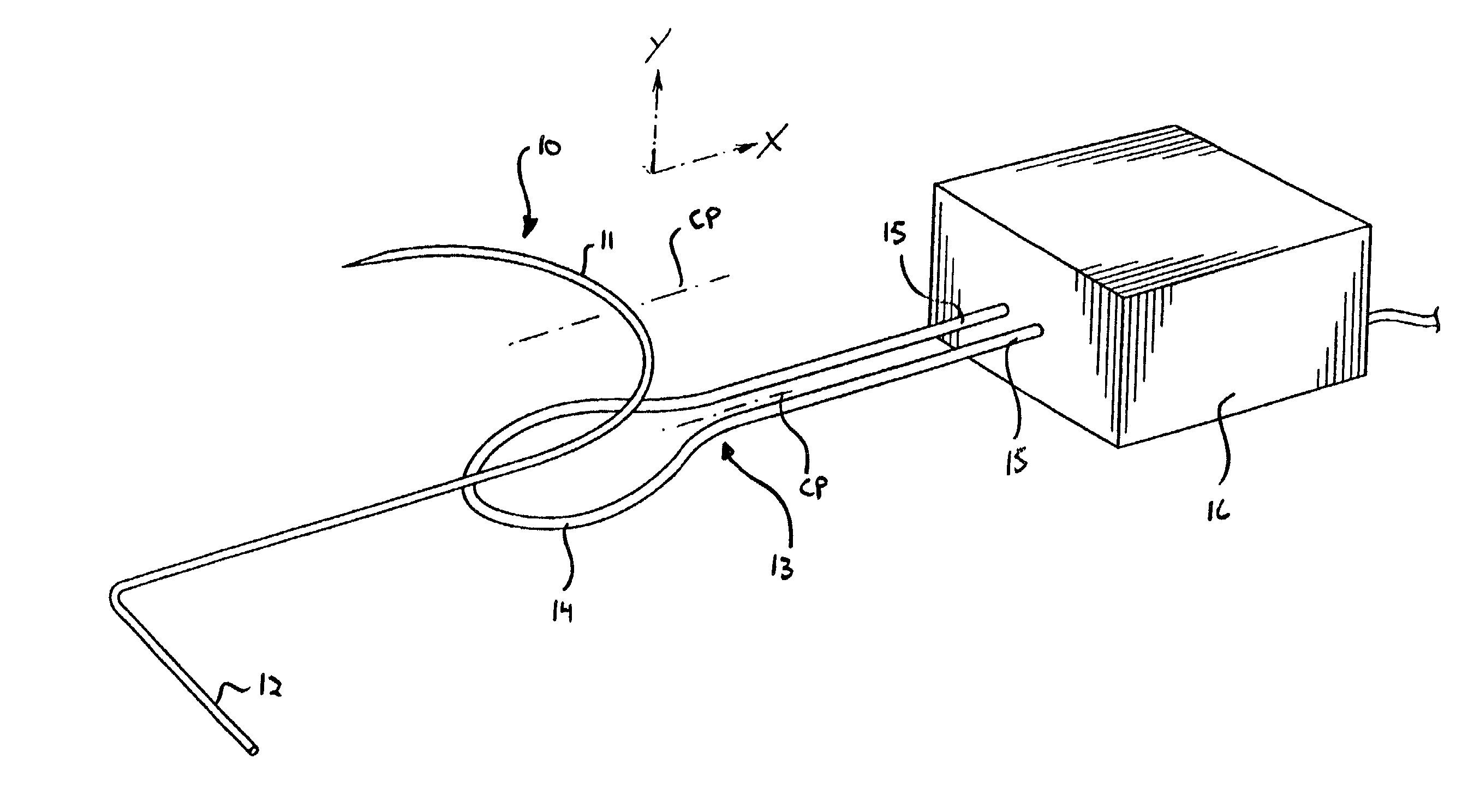Method of selectively annealing a needle
a selective annealing and needle technology, applied in the field of selective annealing needles, can solve the problems of selective annealing, inability to obtain with acceptable certainty curved needles, and inability to use curved needles, so as to facilitate selective hardening or softening of different portions, reduce waste, and increase efficiency
- Summary
- Abstract
- Description
- Claims
- Application Information
AI Technical Summary
Benefits of technology
Problems solved by technology
Method used
Image
Examples
Embodiment Construction
[0017]Referring initially to FIGS. 1–3, a needle 10 which has a curved body 11 is provided. Preferably, the needle has a diameter ranging between about 0.008 to about 0.061 inches. During the manufacturing of the curved needle from wire stock, the needle also includes a tail 12. A portion of the curved needle is positioned adjacent to an electromagnetic induction coil 13.
[0018]The induction coil has a flat configuration 14. The coil defines a coil plane designated as “CP” in FIG. 1, and parallel to the “X” axis also depicted in FIG. 1. The curved body 11 of the needle 10 lies in a plane designated as “NP” which is parallel to the coil plane CP of the flat induction coil 13. In this particular embodiment, the needle is positioned relative to the coil to provide the greatest application of heat to that portion of the needle which is subsequently attached to a suture following the selective annealing process. Specifically, this portion is ideally positioned at or near the center of the...
PUM
| Property | Measurement | Unit |
|---|---|---|
| diameter | aaaaa | aaaaa |
| length | aaaaa | aaaaa |
| length | aaaaa | aaaaa |
Abstract
Description
Claims
Application Information
 Login to View More
Login to View More - R&D
- Intellectual Property
- Life Sciences
- Materials
- Tech Scout
- Unparalleled Data Quality
- Higher Quality Content
- 60% Fewer Hallucinations
Browse by: Latest US Patents, China's latest patents, Technical Efficacy Thesaurus, Application Domain, Technology Topic, Popular Technical Reports.
© 2025 PatSnap. All rights reserved.Legal|Privacy policy|Modern Slavery Act Transparency Statement|Sitemap|About US| Contact US: help@patsnap.com



